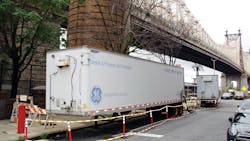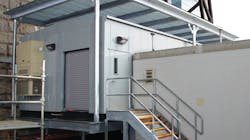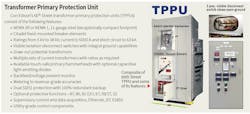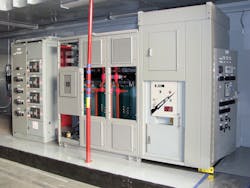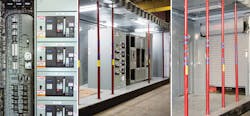In 2015, when the New York City Department of Environmental Protection (DEP) announced the water supply to the city would be switched from the Catskill/Delaware watershed to a blend of the Catskill/Delaware and Croton watersheds, most New Yorkers simply shrugged their shoulders and went on their merry way making coffee, washing the dishes and taking long showers.
This was true of most New Yorkers, but not Consolidated Edison Co. of New York Inc. (Con Edison). On a peak day, the Con Edison system distributes more than 13 GW of electricity to an area of less than 800 sq. miles (2072 sq. km). Keeping the lights on in New York City includes heating and cooling that—in a good part of the lower two-thirds of Manhattan—operate on steam. Con Edison’s steam system is the largest in North America, larger than the next nine urban systems combined.
It turns out, when the New York City DEP modified the water source coming into the city, it changed the formula, or chemistry, of the water. The mineral content of the new mixture might have been fine for almost every normal application but not for boiling water and making steam by the megaton like Con Edison. As a result, the utility had to design customized electrical and mechanical water treatment solutions tailored to each of its steam plant locations. In particular, the steam plant on 60th Street presented numerous challenges.
Steam System
New York City’s steam system contains more than 105 miles (169 km) of mains providing service to approximately 1800 customers in Manhattan, from 96th Street down to The Battery at the southern tip of the island. Commercial and residential customers use steam for heating, hot water, air conditioning, commercial laundries and even sterilization in hospitals. The steam traveling through Con Edison’s system is used to heat and cool some of New York’s most famous addresses such as the United Nations complex, Empire State Building and Metropolitan Museum of Art.
At the winter peak, nearly 10 million lb./hr. (4.5 million kg/hr.) of steam is released. Roughly 24 billion lb. (11 billion kg) of steam flow through the system every year, serving approximately 3 million New Yorkers.
“Have you ever looked inside of the family teapot?” asked Al Dazio, Con Edison’s engineering section manager for power plant electrical engineering. “It’s a mineralized mess in there. And you are only boiling a couple of cups of water a day. If the front end of our steam plants didn’t properly treat and demineralize this new water formula, the boiler tubes would plug up in a heartbeat, thermal efficiency would drop to nothing, and either the maintenance cycle would become intolerably repetitive and costly or the steam plants would be forced to shut down.”
As a stop gap, Con Edison quickly rented water treatment trailers from GE Power and Water. Then the utility parked a sizable number of these neighborhood-noticing tractor trailers on the streets right next to each steam plant. These temporary water treatment front ends provided Con Edison a bit of breathing room while it designed specific, customized electrical and mechanical water treatment solutions tailored to each location.
Steam Plant Challenges
Of course, it would have been nice if the steam plants were identical so a common solution could be used across all the locations. Each steam plant is a different age and size, built by different operating companies that were consolidated over the years into Con Edison. Although each one of these water treatment design and build projects was like trying to refit a proverbial ship in a bottle, the steam plant located on 60th Street was the most challenging.
The 60th Street steam plant sits at the base of and directly under the 59th Street bridge. The entire western wall of the 60th Street station is the same physical stone pediment as the 59th Street bridge. The rough-hewn stone wall makes it feel like walking in a mine rather than a man-made structure. 60th Street is jam-packed with nearly zero room inside the plant to add any of the hundreds and hundreds of square feet of water treatment equipment needed to clean and polish the newly formulated water. The medium-voltage electric feeds and main power transformers feeding 60th Street only had a fraction of the electric power initially allocated by design engineering to fire up the new 2250 gpm (8517 lpm) ultra-filtration reverse osmosis treatment systems.
In New York, when it is not possible to build out, the alternative is to build up. It was decided the entire treatment plant would be located on the roof and sandwiched under the 59th Street bridge. The new water treatment complex would be built in prefabricated fashion. Containerized sections would be flown onto the newly shored up roof by rigging masters, who would lift the multi-ton pieces from their double-drop lowboys and slip them in — under the deck of the 59th Street bridge — landing each onto its pad with dime-size accuracy.
The substation needed 100% redundancy. If the water treatment plant were to go down, the steam plant would go down. This meant two identical unit substation-type lineups with medium-voltage primaries — feeding dual cast-coil transformers supplying multiple 480-VAC feeders for the water treatment plant as well as their own auxiliaries — all enclosed in an environmentally controlled common-isle house. Each lineup required a level of complete redundancy, protection, metering, control and safety margins normally reserved for far more capital-intensive high-voltage substations.
The outdoor walk-in-type switchgear house would need to be fabricated in only two sections, so it could be flown onto the roof and quickly mated. The switchgear house had to be shoehorned into the northwest corner of the roof between a cinderblock battery house and the outer parapet wall, dimensionally somewhat less than 18 ft (5.5 m) wide, while meeting National Electric Code and New York City approval requirements and the roof’s weight limitations.
Internally, Con Edison electrical and mechanical engineering had to work through the station’s electrical feeders and main transformers being the controlling factors dictating the amount of electrical power that could be siphoned off for the new water treatment processes. Engineering needed an interdisciplinary team effort to reiteratively juggle size, weight and power-consumption constraints, all with an eye on costs to ensure the end result would be an exceptionally robust, reliable steam station with no reductions in output capabilities.
TPPU Benefits
A request for quotation (RFQ) went out and a customized switchgear supplier was selected: National Breaker Services LLC. Fortunately, National Breaker Services previously had worked with Con Edison on other water treatment plants in which the projects required prototyping development and shrinking the new design of a transformer primary protection unit (TPPU). Con Edison has found the TPPU quite beneficial, by increasing the protection, reliability and longevity of medium-voltage front ends.
Historically, Con Edison cabled directly into the medium-voltage side of its unit substation transformers, occasionally adding a primary disconnect switch. The medium voltage was normally fed from a draw-out circuit breaker elsewhere in the plant. Such breakers would supply several unit substations around the generating station and protective settings needed to be elevated to cover all the downstream loads.
Operating such a breaker would take down multiple unit substations. This meant a protective trip or attempting to schedule an outage would bring on multifaceted complications. Putting a full switchgear position on the front end of every transformer would not only have a cost component, but the bigger problem is there simply was no space to install a switchgear section and even less room to draw out the breaker.
The TPPU enables Con Edison to match exactly and protect the front end of power transformers within a footprint that is a fraction of the size of historical equipment with similar ratings. In addition, there is no need for the additional isle space associated with the draw-out breaker and its ensuing Occupational Safety and Health Administration (OSHA) personnel safety constraints.
Enough TPPUs have been designed now to have developed a menu of ratings, functions and desired features. Con Edison can employ TPPUs from 5 kV to 38 kV, up to 4000 A continuous and up to 63 kA, as needed for a given application.
Each 60th Street TPPU sits on a 4-ft sq. (1.5-sq. m) footprint. It employs metering, monitoring, data logging, oscillography, fully redundant 50/51 protection, plus transformer differential and communications from dry contacts to DNP and IEC 61850. Each TPPU is feeding into the front end of a cast-coil transformer and, as such, the utility now has a design package feeding into 100% redundant low-voltage lineups for our new water treatment facilities.
On the low-voltage side of the transformer, each 480-V microprocessor trip-unit-protected feeder breaker has a fully redundant mirror image on the opposite unit substation. Additionally, each of the low-voltage lineups included a dedicated breaker designated specifically for house power. Collectively, these two-house power breakers then feed into a transfer switch scheme, which energize the light and power transformer for the house and its auxiliaries.
Critical Conditions
Con Edison had to address two critical conditions with the 60th Street steam plant.
The first concern being that nothing is perfect. For example, one of the transformers on the roof, under the 59th Street bridge, bottled up in a metal house could potentially fail. It likely would cost as much as the entire substation project to fix it. This concern was resolved by working with Olsun Electrics Corp., the cast-coil transformer manufacturer, to ensure the core and coil assembly could be disassembled from its enclosure and fit into the isle between the two lineups.
The team also worked with National Breaker Services to engineer and install a roll-up door in the southeastern corner of the switchgear substation house. This ensures future generations can remove and reinstall relatively easily the active parts of either transformer should an issue arise.
The second concern was a bit more nuanced. Under no circumstances could the total load on the switchgear exceed a prescribed maximum.
The simplest thing would have been to ignore this possibility, but — working with National Breaker Services instrumentation and control specialists — the team took advantage of Electro Industries’ Shark meters, specified for each of the low-voltage breakers. These meters provide a proportional, scaled analog output.
By bringing the Shark outputs of the lineups to a simple controller device, Con Edison can add up the total current being drawn by the entire lineup and set programmable low- and high-level alarms to send to the station’s control room. If no actions ultimately are taken at the end of the programmed time frames, automatic load shedding criteria can be established and implemented. National Breaker Services has dubbed this device the Herescu Accumulator.
Securely perched under the 59th Street bridge is a once-in-a-lifetime substation. With its unique scope and execution, this project has been a professional highlight and will bring significant impact and benefits to many New Yorkers for years to come.
Acknowledgement
The author would like to thank Bruce Hack of National Breaker Services for his contributions to this article.
For more information:
Electro Industries | www.electroind.com
National Breaker Services | www.nationalbreakerservices.com
Olsun | www.olsun.com
About the Author
Danielle Roberts
Danielle Roberts currently holds the position of a senior electrical engineer in the Department of Electrical Engineering at Consolidated Edison and has been part of the Electrical Plant Engineering section since 2014. In her current role, she supports electrical modifications/projects at all electric and steam generating facilities owned by Consolidated Edison. Prior to joining Consolidated Edison, she worked in the defense industry for five years. She held the position of an electrical engineer at Raytheon Integrated Defense. At Raytheon, her duties involved supervising the manufacturing and testing of transformers. Roberts currently holds a BS in electrical engineering from New York University School of Engineering. She is currently taking courses toward becoming a licensed project manager.
